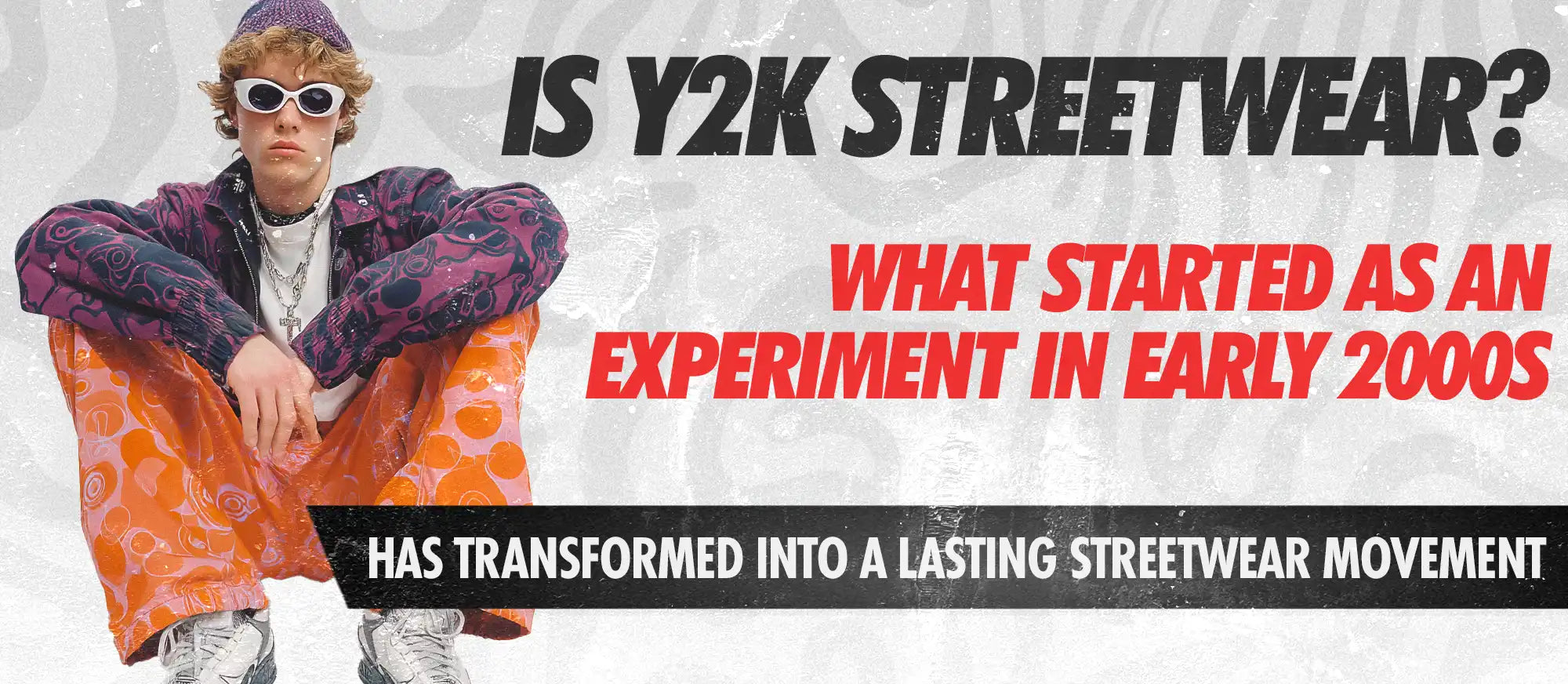
Is Y2K Streetwear?
Okay, real talk—have you noticed how everyone suddenly looks like they raided a time capsule from 2001? Last week, I saw someone wearing cargo pants with enough pockets to smuggle a whole convenience store, paired with a baby tee so tiny it could double as a scrunchie. And you know what? They looked absolutely fire.
When Your Mom's Old Photos Become Your Style Inspo
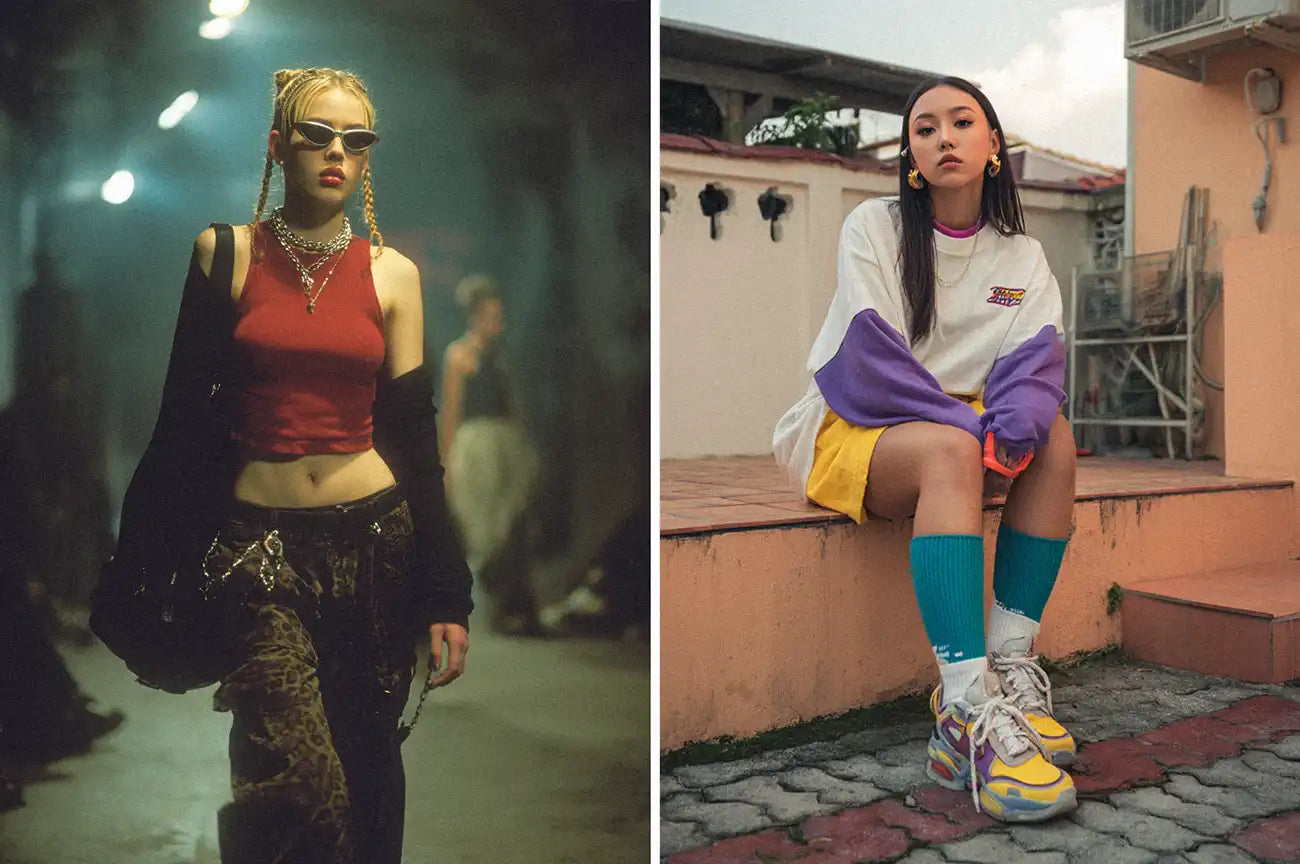
Here's the thing nobody's really saying out loud: Y2K isn't just streetwear—it basically invented the blueprint for what we call streetwear today. While everyone's debating whether those low-rise jeans are a crime against humanity or pure genius, the real conversation should be about how Y2K fashion literally predicted our entire relationship with technology, identity, and self-expression. We were dressing like NPCs in a video game before NPCs were even a meme.
In this deep dive, we're not just answering whether Y2K is streetwear (spoiler: it's bigger than that). We're unpacking how a generation that thought the world might end when the clock struck midnight on December 31, 1999, accidentally created the most resilient fashion movement of the 21st century. From the Matrix-inspired tech pessimism to Bratz doll optimism, Y2K streetwear is basically what happens when anxiety and hope have a baby and dress it in metallic fabric.
What Defines Y2K Fashion?
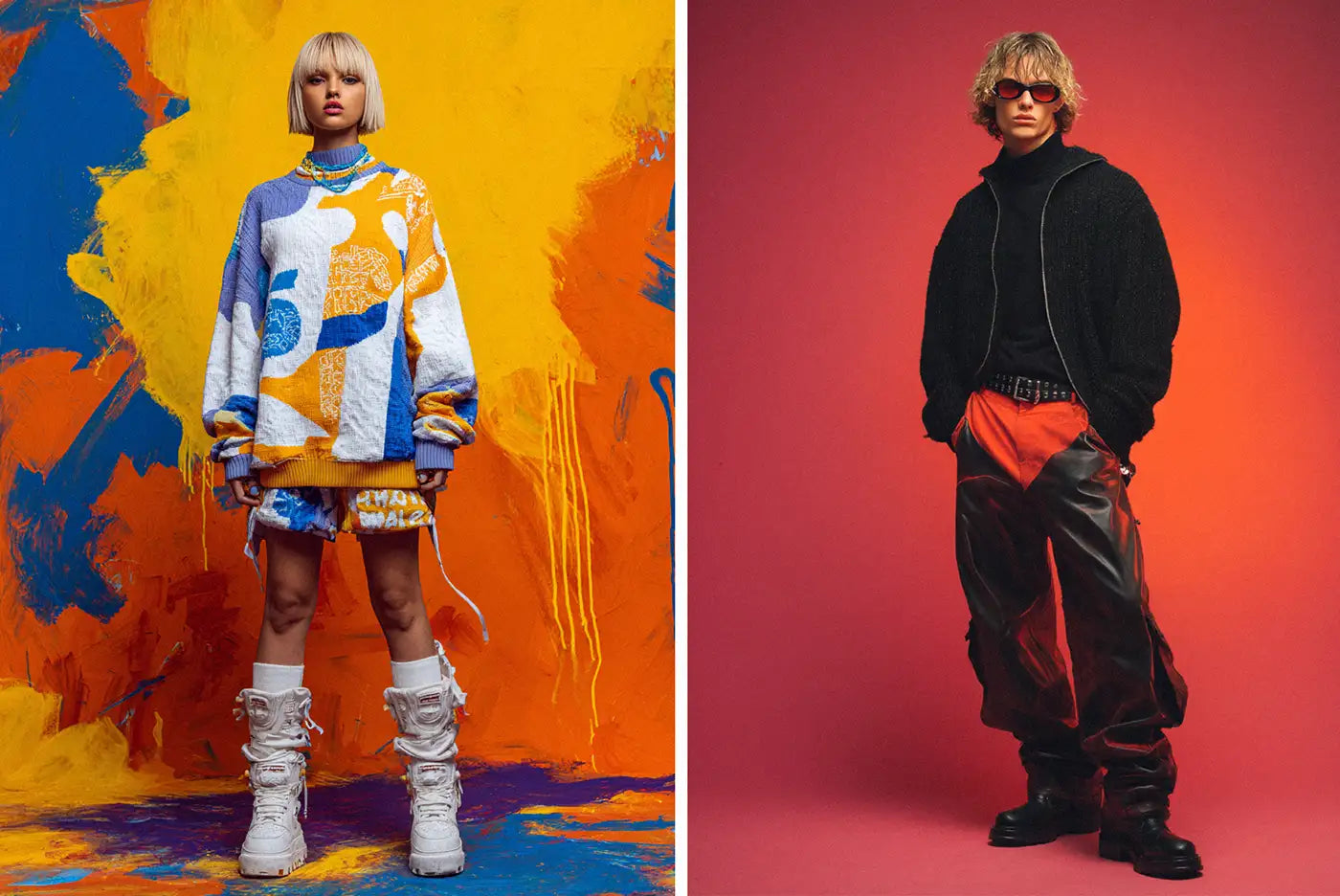
The Original Y2K Era: When the Future Was Plastic (and That Was Fantastic)
Let's set the scene: It's 1999, and everyone's convinced computers are about to collectively lose their minds. Meanwhile, fashion designers are like, "What if we dressed like sexy robots who shop at Claire's?" The result? A beautiful chaos that makes today's streetwear look like it's playing it safe.
The Y2K era wasn't just about clothes—it was a full-blown psychological response to living at the edge of a new millennium. Think about it: people were literally stockpiling canned goods for the apocalypse while simultaneously buying pants with USB port-sized pockets they'd never use. The fashion reflected this bizarre duality—we dressed like we were heading to a rave on Mars, but also like we might need to survive in a bunker. Those cargo pants? Not just a vibe—they were survival gear for a digital apocalypse that never came.
What nobody talks about is how Y2K fashion was actually incredibly smart about predicting our future relationship with technology. Those tiny sunglasses everyone mocks? They look exactly like AR glasses prototypes.
The obsession with visible technology (remember when having your phone's antenna showing was a flex?) predicted our current reality where AirPods are basically jewelry. Even those weird arm warmers and fingerless gloves? They're basically the ancestor of today's tech-wear accessories.
Core Y2K Elements: More Than Just Butterfly Clips and Chaos
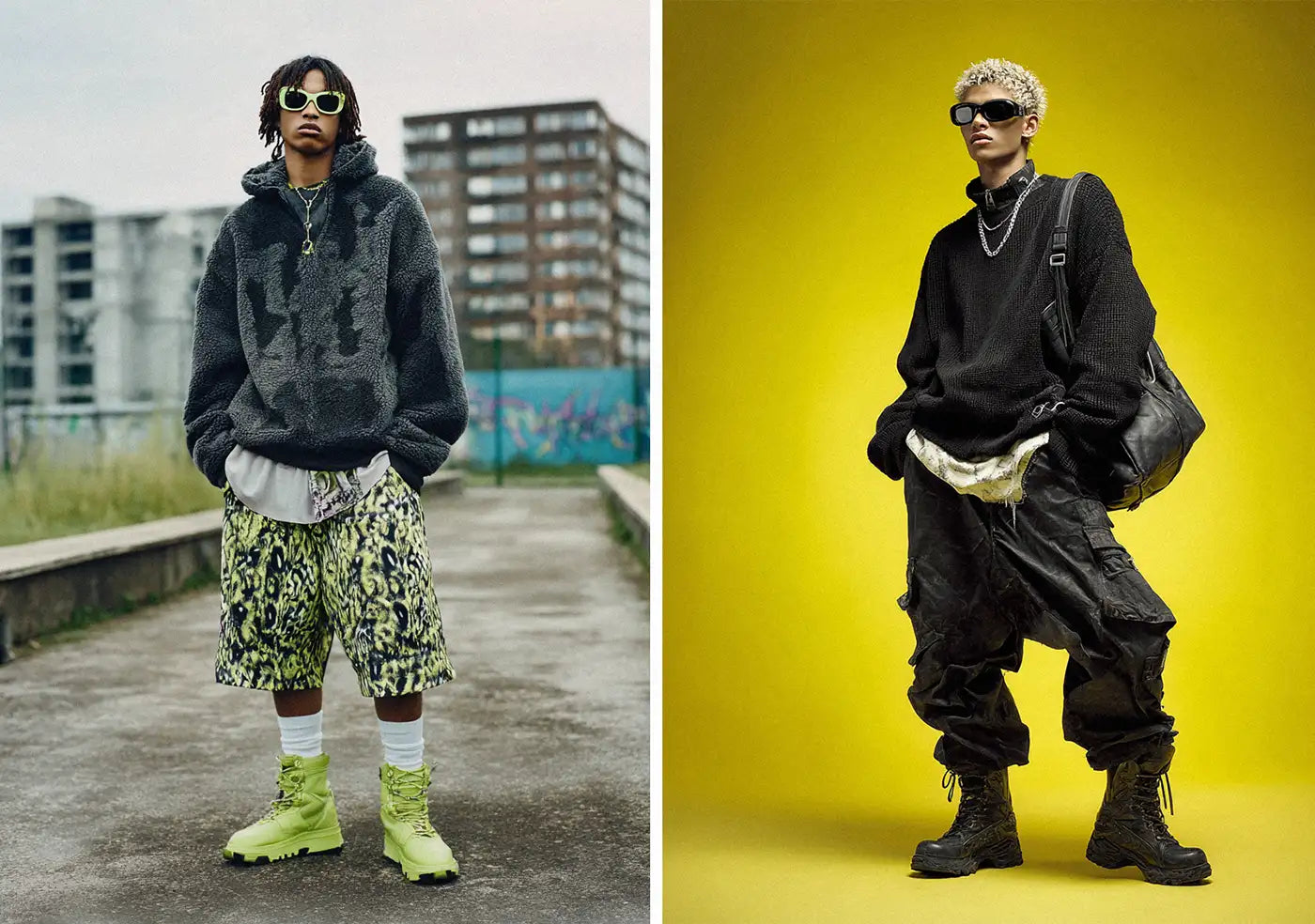
Here's where it gets spicy—Y2K fashion wasn't random; it was algorithmic before algorithms ran our lives. Every element followed an unspoken formula: take something functional, make it dysfunctional, then make it hot. It's basically what would happen if Excel and Euphoria had a design baby.
The real genius of Y2K aesthetics was the "digital texture" philosophy that nobody's named until now. Everything had to look like it could exist in both real life and a screensaver. Holographic materials? That's your skin in screensaver mode. Those weird bubble hems? That's fashion buffering at 56k modem speed. The entire aesthetic was about looking like you could glitch in and out of reality—which, considering how we live between IRL and URL now, was prophetic as hell.
And can we talk about the color psychology? Y2K didn't just use color; it weaponized it. The combination of baby pink and electric blue wasn't random—it was literally hacking our brains with dopamine. These weren't just clothes; they were wearable serotonin. The metallics weren't about looking rich; they were about looking like you transcended currency altogether and paid for things with vibes.
How Y2K Became Modern Streetwear
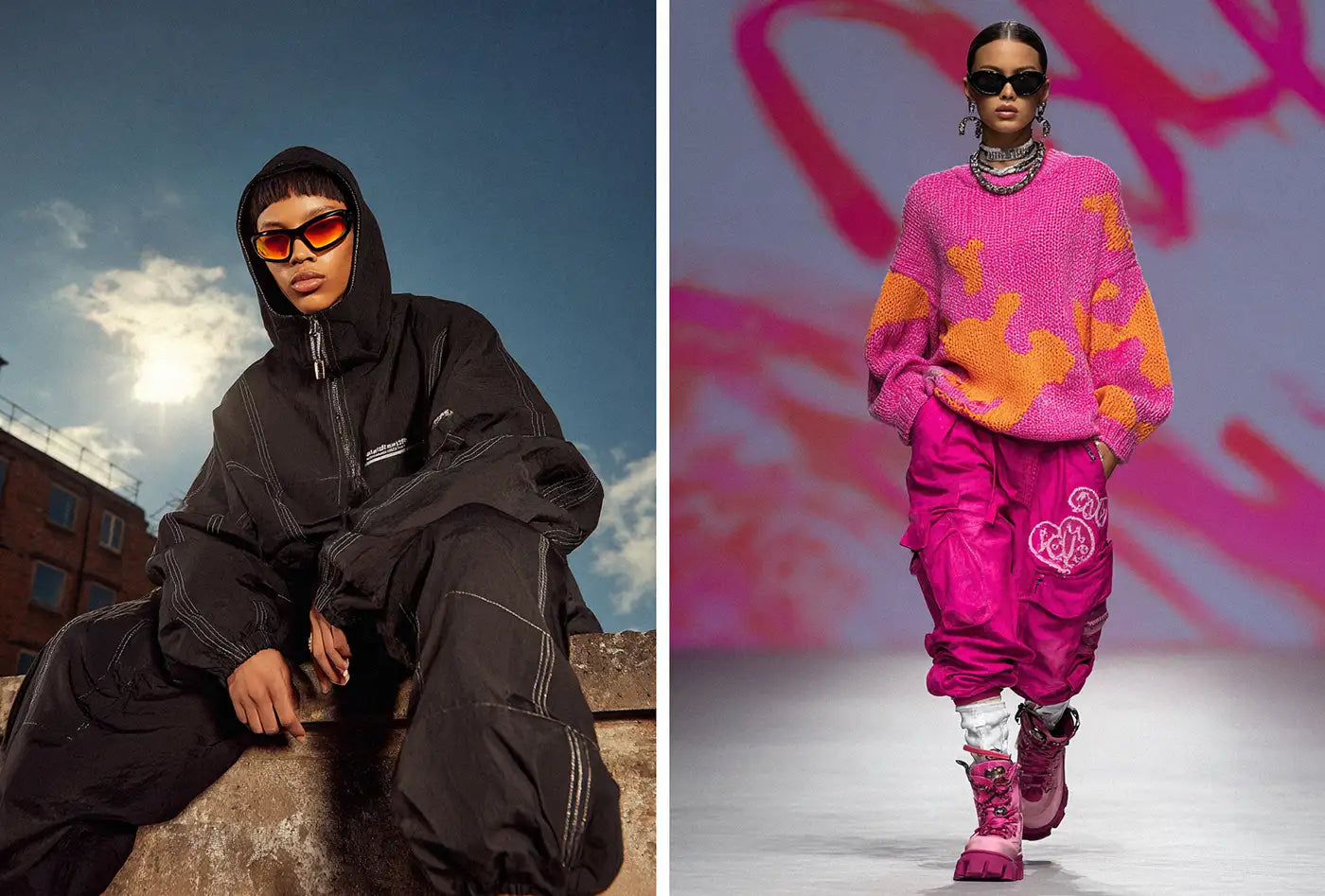
The Evolution from Pop to Street: A Glow-Up Nobody Saw Coming
This is where the story gets juicy. Y2K fashion didn't evolve into streetwear—streetwear evolved to catch up with Y2K. While traditional streetwear was still figuring out how many Supreme logos were too many (trick question: there's no limit), Y2K kids were already creating fits that looked like they dressed in the dark at a NASA gift shop and somehow made it work.
The transformation happened in the most Gen Z way possible: through pure, unfiltered irony that became sincere. It started with people wearing Von Dutch trucker hats "as a joke" to parties. Then someone wore JNCO jeans to a fashion week afterparty "ironically." Suddenly, Anna Wintour's assistant is asking where to cop those platform Sketchers "for a shoot." The pipeline from cringe to cool shortened from years to literally one TikTok video going viral.
But here's the tea that'll really blow your mind: Y2K streetwear succeeded because it was the first fashion movement that understood content creation before content creation was a thing. Every Y2K outfit was designed to be photographed with a disposable camera, uploaded to MySpace, compressed to pixel death, and still look iconic. Those shiny materials that caught flash photography? The bright colors that popped on low-res webcams? The oversized accessories that were visible even in a 100x100 pixel profile photo? This wasn't fashion—it was early SEO for your personality.
Why Gen Z Embraced Y2K Streetwear: Nostalgia for a Future That Never Happened
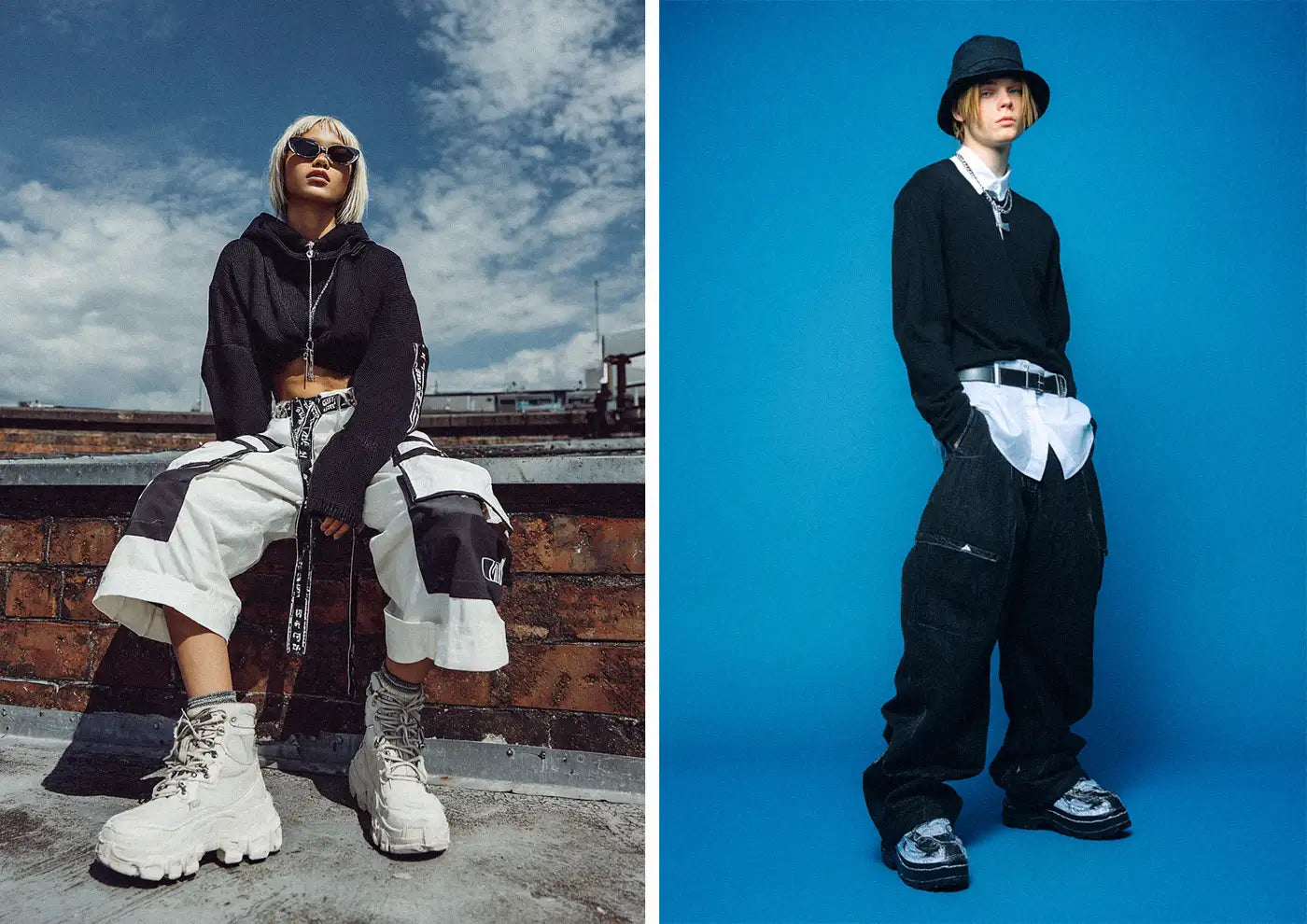
Here's the plot twist that'll mess with your head: Gen Z isn't nostalgic for the actual Y2K era—they're nostalgic for the future that Y2K promised but never delivered. They're not trying to look like 2001; they're trying to look like what people in 2001 thought 2025 would look like. It's meta-nostalgia, and it's genius.
The real reason Y2K streetwear hits different for Gen Z is because it represents the last time we were optimistic about technology. This was pre-surveillance capitalism, pre-algorithm anxiety, pre-doom scrolling. The Nokia phone charm hanging from your bag isn't about the phone—it's about remembering when phones were tools, not overlords. Wearing a "Intel Inside" baby tee isn't random—it's about when we were excited about processors instead of processed by them.
There's also something deeper happening here. Y2K streetwear is basically generation trauma therapy through fashion. Gen Z inherited a world on fire, an economy in shambles, and a climate in crisis. Y2K fashion represents the last time anyone thought the future would be fun. By wearing these clothes, they're not just making a fashion statement—they're manifesting the optimistic future that got canceled. Those butterfly clips aren't holding back hair; they're holding back existential dread.
Y2K vs Traditional Streetwear: The Beef Nobody's Talking About
Let's address the elephant in the room wearing low-rise jeans: traditional streetwear heads are lowkey pressed about Y2K's takeover, and it's hilarious. While streetwear was gatekeeping with limited drops and impossible-to-cop releases, Y2K fashion said "what if fashion was democratic but make it unhinged?" You could get the Y2K look at Target, and that was the point.
Traditional streetwear: "This shirt costs $500 because the logo is slightly tilted."
Y2K streetwear: "This shirt cost $5, but I bedazzled it myself at 3 AM while listening to Cascada, and now it's priceless."
The fundamental difference is that traditional streetwear was about exclusivity through scarcity, while Y2K streetwear is about exclusivity through audacity. Anyone can buy a hypebeast uniform, but it takes real courage to wear a denim mini skirt over flared jeans with a wallet chain connecting them. Y2K streetwear isn't about having money; it's about having the confidence to look like you robbed a Limited Too and a RadioShack in the same spree.
But here's where it gets interesting—Y2K streetwear accidentally solved streetwear's biggest problem: the masculine energy crisis. Traditional streetwear was so aggressively masculine it became a parody of itself. Y2K said "what if everyone dressed like a Bratz doll regardless of gender?" and suddenly, fashion became fun again. Those baby tees on 6'2" dudes? That's not a trend; that's a revolution. The butterfly clips in beards? That's character development.
Must-Have Y2K Streetwear Items for Your Wardrobe
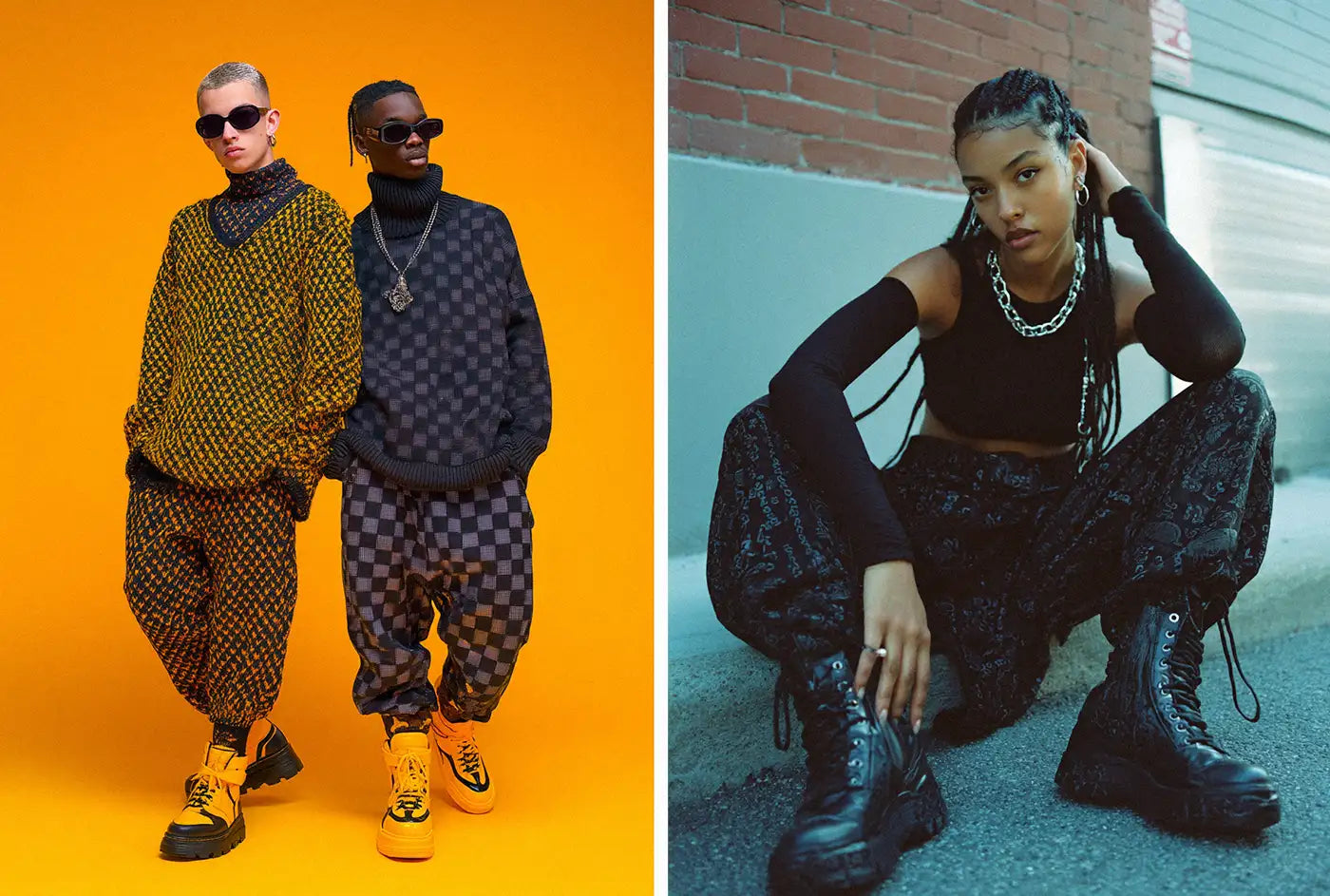
The Top 10 Y2K Streetwear Essentials: Your Shopping List for Time Travel
Listen, I'm about to save you from scrolling through 47 different "Y2K essentials" lists that all say the same thing. This isn't your basic "buy low-rise jeans" guide—this is the real blueprint for looking like you just stepped out of a time machine that got stuck between a Motorola commercial and a Destiny's Child music video.
Before we dive in, let me hit you with some truth: authentic Y2K streetwear isn't about buying everything at once. It's about curating pieces that tell your personal "I survived the digital revolution" story. My homie just copped a metallic puffer jacket from a thrift store for $12, and now fashion bloggers are literally stopping him for street style photos. That's the Y2K magic—it's democratic chaos.
Here's your definitive shopping list (and no, you don't need trust fund money for this):
-
Baggy Cargo Pants - But not just any cargos. We're talking about pants with more pockets than your iPhone has apps. The rule? If you can't fit a Tamagotchi, a flip phone, and your emotional baggage in the pockets, they're not baggy enough.
-
Baby Tees with Unhinged Graphics - Find shirts with the most random corporate logos. Intel Inside? Chef's kiss. A tee from a 2001 dental conference? Even better. The more nonsensical, the more fashion.
-
Velour Tracksuit - Yes, the full Juicy Couture fantasy. But plot twist: mix and match colors. Pink top with green bottoms? That's not a mistake; that's editorial.
-
Platform Sneakers - We're talking Spice Girls altitude. Your ankles might cry, but your fit will sing. Pro tip: Platforms from lesser-known brands hit harder than the obvious choices.
-
Bucket Hats - But make it tech. Reflective materials, USB port details, or those weird air holes that look like speaker grilles. According to Highsnobiety's recent trend report, searches for "cyber bucket hats" increased by 340% in the last year alone.
Brands Leading the Y2K Streetwear Revival: From Dead Stocks to Main Character Energy
The Resurrection Squad
Here's where things get spicy. The brands killing it in the Y2K streetwear space aren't always who you'd expect. Sure, Von Dutch came back (and we have feelings about that), but the real players are moving different.
JNCO is back and somehow even more unhinged than before. They dropped jeans with 32-inch leg openings—that's not fashion, that's architecture. But the genius move? They're collaborating with gaming brands now, creating pants specifically designed for LAN parties that never happen. It's nostalgic for two dead things at once.
Then you've got brands like Ed Hardy trying to rebrand as "vintage ironic" instead of "divorce dad at the club," and honestly? The effort is admirable. But the real heat is coming from new brands that understand the assignment: Cyber Dog, OMIGHTY, and I.AM.GIA are creating new Y2K pieces that feel authentic without being costume-y.
Where to Actually Find This Stuff (Without Getting Scammed)
Real talk—half the "Y2K vintage" online is just Shein with extra steps and a 400% markup. Here's the tea on where to actually source authentic pieces:
• Depop and Grailed: But only if you know how to spot fakes. Look for weird brand collaborations that made no sense then and make no sense now. That Motorola x Baby Phat crossover tee? That's the real deal.
• Japanese resale sites: Japan kept ALL the Y2K stock. Mercari Japan has heat you can't find anywhere else, but you'll need a proxy service.
• Your aunt's basement: No joke. That relative who was "going through a phase" in 2002? They're sitting on a goldmine.
How to Style Y2K Streetwear in 2025
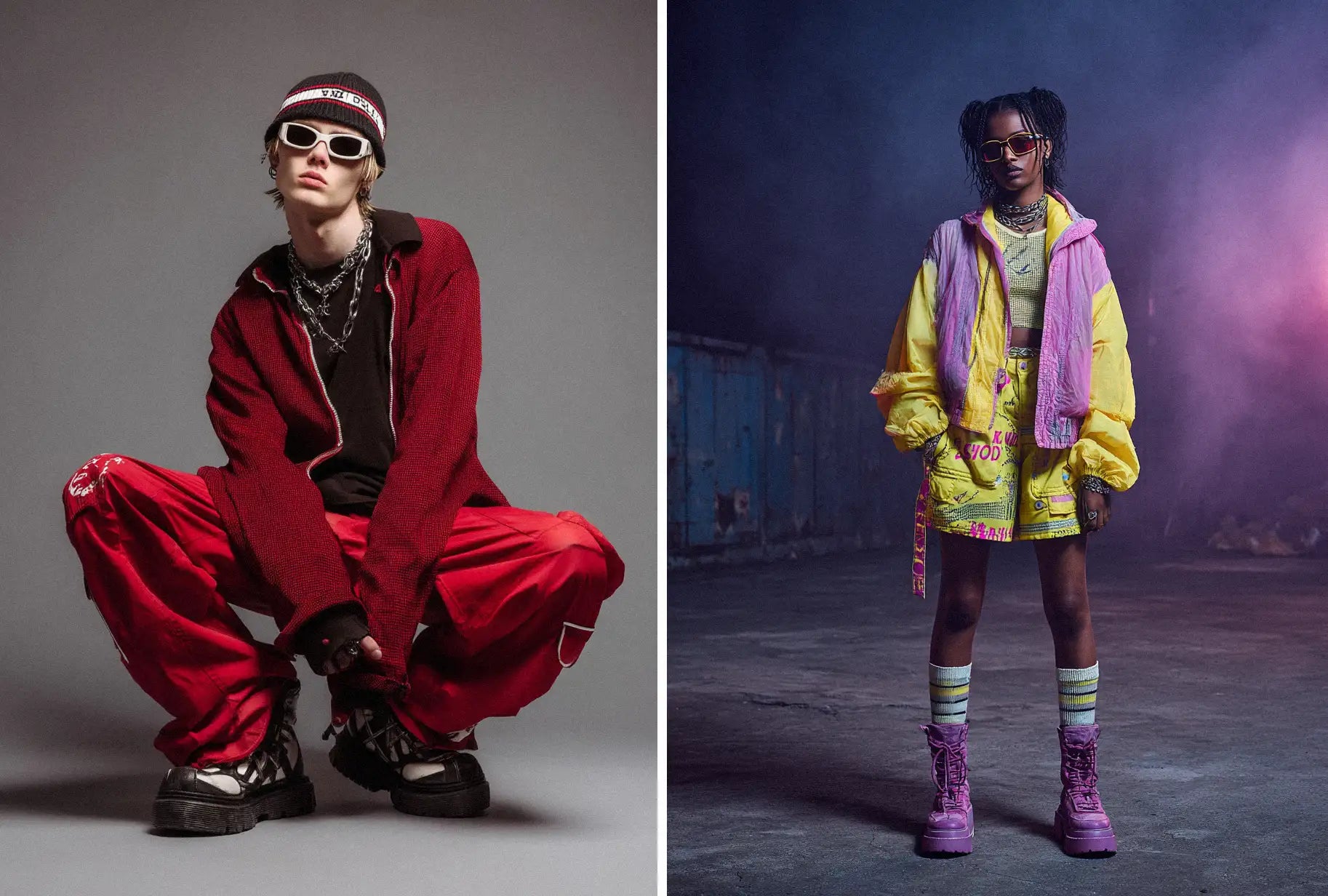
For Different Occasions: Because Your Boss Needs to Know You're From the Future
Daily Drip: The Casual Excellence Formula
The biggest mistake people make with Y2K streetwear is going full costume mode. Nobody needs to see you in head-to-toe metallics at Trader Joe's (unless that's your truth, then live it). The key is what I call the "70/30 rule"—70% modern basics, 30% Y2K chaos.
Start with something current—maybe those perfect-fit jeans everyone's wearing. Then add one Y2K statement piece like a mesh long-sleeve over a baby tee. Finish with modern sneakers but add butterfly hair clips to your keychain. It's giving "I time travel but I have a day job."
My personal go-to daily formula? Straight-leg cargos (Y2K), vintage band baby tee (Y2K), but with a contemporary oversized blazer and Sambas. You look like you raided the closet of someone who was cool in 2001 but also has a 401k now.
Festival and Party Looks: This Is Your Moment
Okay, this is where you can go absolutely feral. Festivals and parties are Y2K streetwear's natural habitat. This is your chance to dress like the main character in a movie about a DJ who saves the world through sick beats.
The festival formula that never fails:
- Metallic or holographic pieces as your base
- Layer mesh or fishnet everything
- Accessories that make noise (chain wallets, jelly bracelets, those ball chain necklaces)
- Tiny sunglasses that protect nothing from the sun
- A bag so small it's basically decorative
But here's the advanced move: contrast textures like you're creating a mood board. Pair that fuzzy bucket hat with vinyl pants and a velour crop top. It shouldn't work, but in Y2K logic, the more it clashes, the more it makes sense.
Gender-Inclusive Styling Tips: Because Gender Norms Are So Y1K
The Beautiful Chaos of Y2K Gender Expression
This is what Y2K streetwear does better than any other fashion movement—it literally doesn't care about your gender. It cares about whether you have the audacity to wear a butterfly belly chain with cargo shorts.
The beauty of Y2K is that everything is simultaneously hyper-feminine and hyper-masculine, which means it's actually neither. Those baby tees? They look fire on everyone. Platform boots? Universal leg lengtheners. Wallet chains? That's not gendered; that's just practical theft prevention with style.
Here's my take: The most authentic Y2K streetwear looks come from picking pieces based on vibe, not gender marketing. Shop every section. That "women's" cropped racing jacket? Looks incredible on dudes. Those "men's" cargo pants? They're giving Kim Possible on everyone.
Common Y2K Streetwear Mistakes to Avoid: Don't Be That Person
The Crimes Against Y2K We Need to Discuss
Look, I'm all for creative expression, but some of y'all are out here looking like you googled "Y2K costume" and called it a day. Let's talk about what NOT to do:
The Over-Accessorizing Trap: Just because you CAN wear 47 butterfly clips doesn't mean you should. The rule is three statement accessories max. Wallet chain, tinted sunglasses, and one (1) excessive belt. That's it. You're not a walking Claire's store.
The Time Period Confusion: Mixing Y2K with 80s or 90s pieces randomly isn't "eclectic"—it's confusing. Scene kid raccoon stripes are 2007, not Y2K. Grunge flannel? That's 1994. Stay focused on 1998-2003 or you'll look like a thrift store exploded on you.
The Irony Overload: Wearing Y2K "ironically" shows, and it's not cute. The magic happens when you genuinely commit to the aesthetic. That means wearing those low-rise jeans with confidence, not constantly adjusting them and making jokes about how ridiculous they are.
Y2K Streetwear's Influence on Modern Fashion
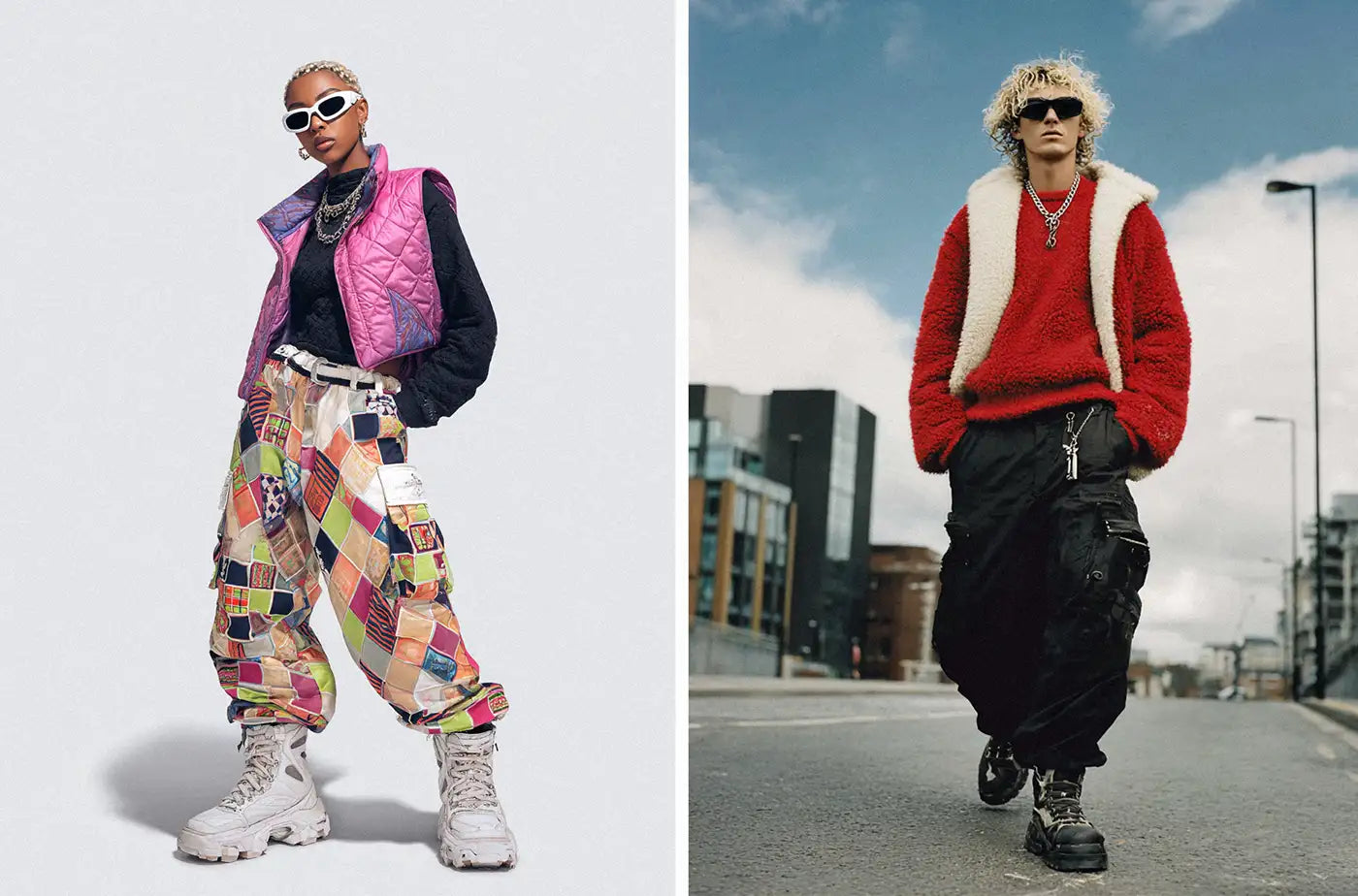
From Runway to Street: When Balenciaga Discovered Cargo Pants
High Fashion's Y2K Awakening
Something wild happened around 2019—luxury fashion houses suddenly remembered Y2K existed, and they've been mining it for inspiration ever since. Balenciaga sent models down the runway in pants that could've been pulled straight from a 2002 Delia's catalog, just with a $2,000 price tag.
But here's what's actually interesting: high fashion isn't just copying Y2K; they're intellectualizing it. Demna Gvasalia called it "exploring the anxiety of technological optimism," which is a fancy way of saying "metallic cargo pants are cool again." Vogue's runway analysis noted that Y2K references appeared in 73% of Spring 2024 collections, making it the most referenced era in recent fashion history.
The real gag? Luxury brands are now copying what kids on TikTok were doing two years ago. That $3,000 Miu Miu micro-mini? It's literally what girls were DIY-ing from their mom's old denim skirts in 2020. Fashion's food chain is now: Depop → TikTok → Runway → Retail, and Y2K streetwear is the perfect example of this new ecosystem.
Sustainability and Y2K: The Accidentally Eco-Friendly Trend
When Being Broke Became Environmental Activism
Here's the plot twist nobody saw coming: Y2K streetwear might be the most sustainable fashion movement we've ever had. Not because it tried to be, but because the entire aesthetic is built on thrifting, DIY, and wearing the most random things you can find.
The Y2K streetwear community has basically turned secondhand shopping into an art form. Those kids finding Von Dutch at Goodwill for $3 aren't just saving money—they're keeping tons of clothing out of landfills. It's environmental activism disguised as being cool on a budget.
But let's keep it 100—the fast fashion giants trying to capitalize on Y2K are missing the entire point. Buying a "Y2K collection" from a fast fashion brand is like buying "authentic street food" from Applebee's. The whole magic of Y2K streetwear is the hunt, the discovery, the "can you believe I found this?" energy.
Where Is Y2K Streetwear Heading?
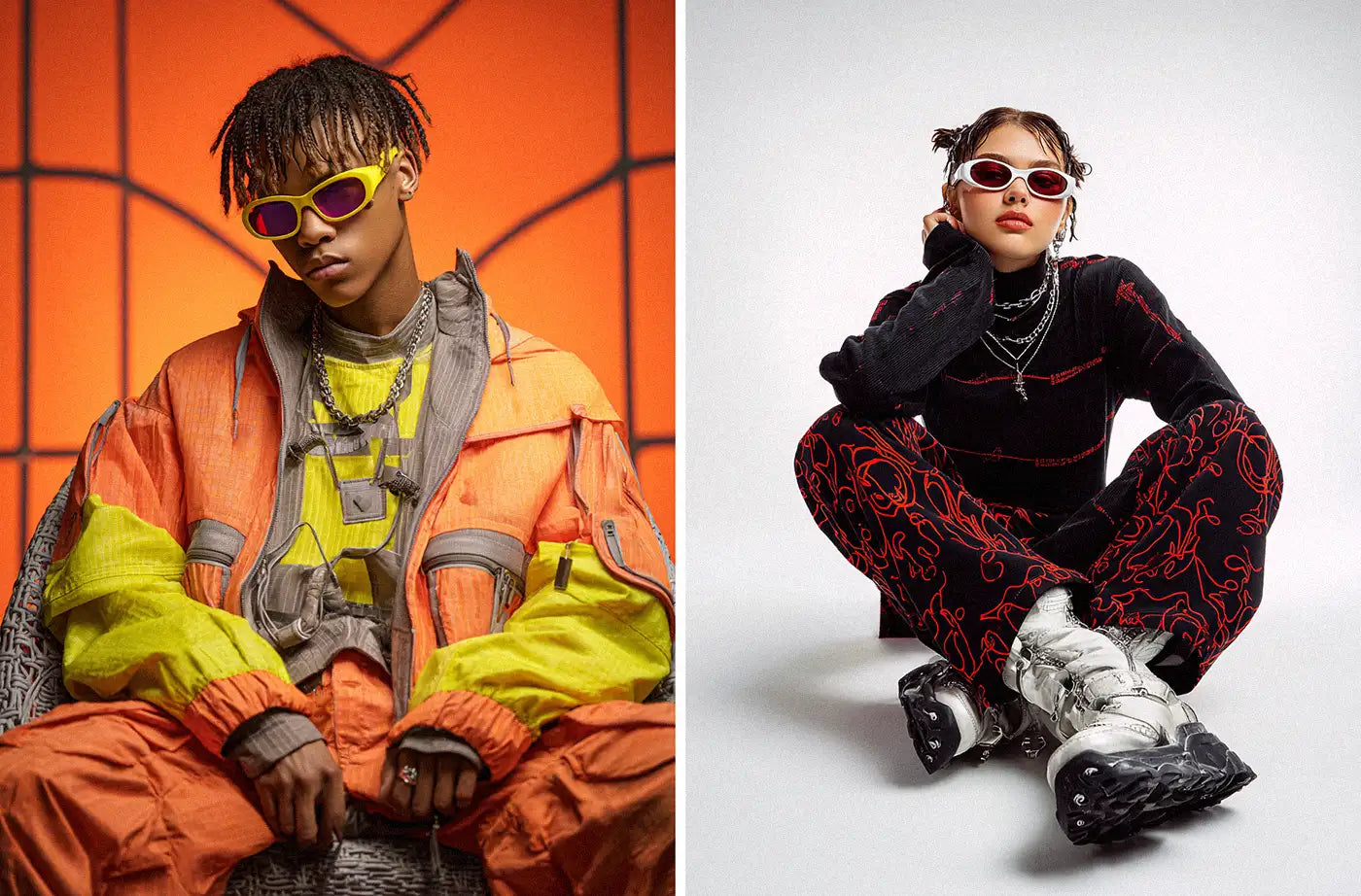
The Future of Nostalgia: When Yesterday's Tomorrow Becomes Tomorrow's Yesterday
2025-2026 Predictions That'll Actually Happen
Based on what I'm seeing in the underground scenes and what the kids who actually drive culture are doing, here's where Y2K streetwear is heading:
Cyber-Y2K Fusion: We're about to see Y2K aesthetics merge with actual future tech. Think AR-activated graphics on baby tees, NFT authentication for vintage pieces (I know, I know, but hear me out), and smart fabrics that change color like those mood rings we all had.
The Nokia Era: Mark my words—2025 is going to be the year of tech nostalgia accessories. Not just phone charms, but entire fits inspired by early tech. iPod Shuffle colorways, Motorola Razr metallics, that translucent Nintendo 64 aesthetic. Someone's going to make a fortune selling bags that look like old computer towers.
Y2K Minimalism: This sounds like an oxymoron, but trust. We're going to see a stripped-down version of Y2K that takes the silhouettes but loses the chaos. Think monochrome cargo pants, subtle metallics, baby tees without graphics. It's Y2K for people who have to go to work but still want to feel something.
Investment Pieces Worth Buying Now: Your Future Self Will Thank You
The Pieces That'll Be Worth Stupid Money in 5 Years
Not to sound like your dad talking about baseball cards, but some Y2K pieces are about to become seriously valuable. Here's what to grab now while everyone's still sleeping:
• Authentic brand collaborations from 1999-2003: That random Pepsi x FUBU collab? Keep it. • First-generation tech-wear: Original Bluetooth earpiece holders, iPod carrier vests, phone holsters that fit nothing current • Cyber-goth crossover pieces: The stuff that was too weird even for Y2K is about to have its moment • Kids' Y2K pieces in adult sizes: Limited Too for grown-ups is the next wave
Conclusion: Y2K Streetwear Isn't Just Fashion—It's Time Travel Therapy
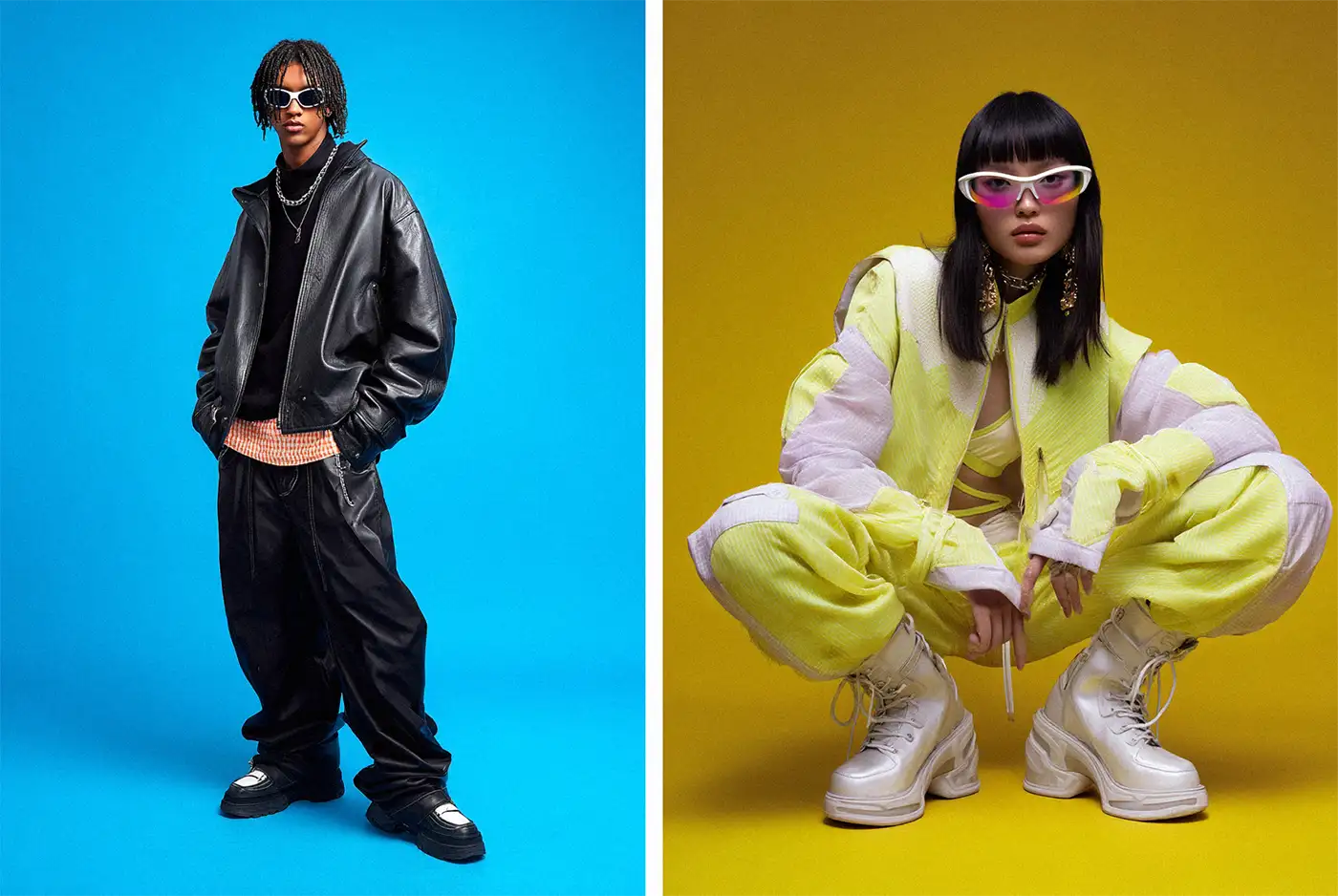
So, is Y2K streetwear? After this deep dive, the answer isn't just yes—it's that Y2K basically invented the template for what modern streetwear has become. It's democratic, it's chaotic, it's technological, and most importantly, it doesn't take itself too seriously while somehow being deeply serious about self-expression.
What makes Y2K streetwear so powerful right now isn't nostalgia—it's hope. Every time someone puts on those ridiculous low-rise cargos or clips in those butterfly accessories, they're not trying to go back to 2001. They're trying to recapture that feeling of believing the future would be bright, shiny, and full of possibility. In a world that feels increasingly dystopian, dressing like you're in a Zenon: Girl of the 21st Century sequel is actually radical optimism.
The beauty of Y2K streetwear is that it's simultaneously a joke and completely sincere. It's fashion that admits it's ridiculous while being totally committed to that ridiculousness. And honestly? That's the energy we all need right now.
Whether you're ready to go full Y2K streetwear with metallic everything, or you just want to dip your toe in with a single butterfly clip, remember this: Y2K fashion survived the actual Y2K, the 2008 recession, a pandemic, and every fashion magazine declaring it "over" approximately 47 times. It's not going anywhere.
So grab those cargo pants, throw on that baby tee, clip those butterflies wherever butterflies can be clipped, and step into the future we were promised in 2001. Because if Y2K streetwear taught us anything, it's that the future doesn't have to make sense—it just has to make you feel something.
Ready to start your Y2K streetwear journey? Check out the collection at y2k-drip.com and remember: in Y2K logic, too much is never enough, and if your outfit doesn't confuse at least one millennial, you're not trying hard enough.

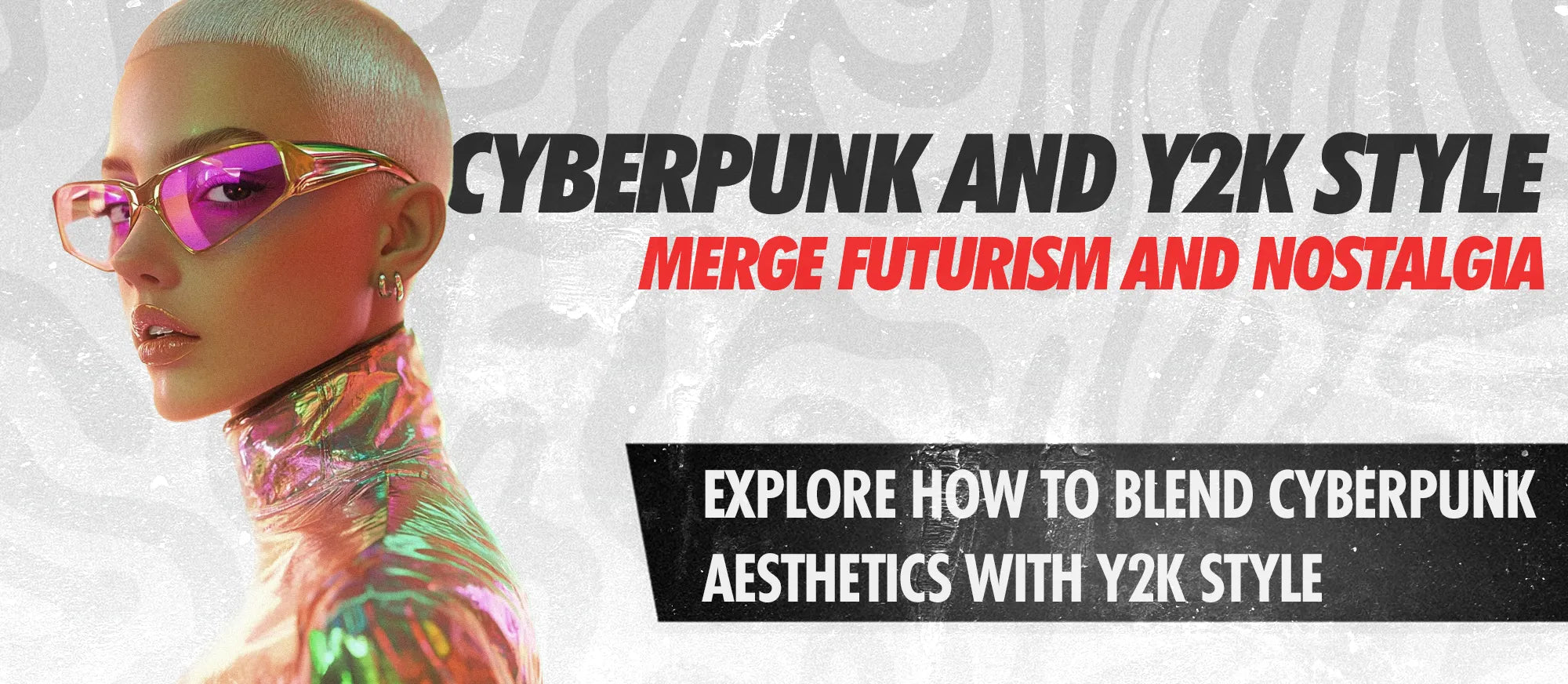
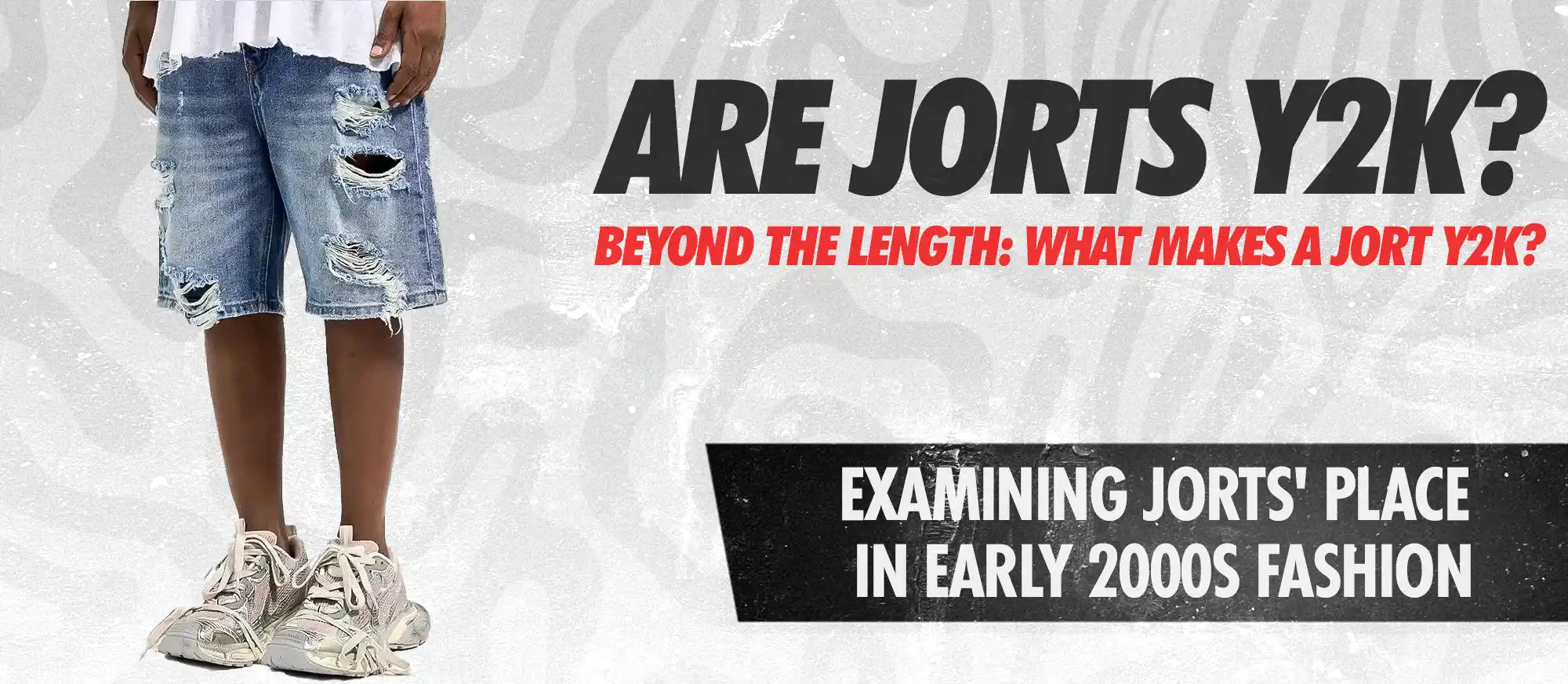
Leave a comment
This site is protected by hCaptcha and the hCaptcha Privacy Policy and Terms of Service apply.